一、背景#
Amazon Lightsail轻量服务器,算是在众多大厂服务器中比较划算的一款,3.5美刀一个月就可以获得这样的配置:
1
2
3
4
| 512 MB Memory
2 vCPUs Processing
20 GB SSD Storage
1 TB Transfer
|
还可以通过吃码的方式获取更优惠的价格。
但是超出流量限额后,每GB流量0.12美金,加上Lightsail的带宽最高可达4Gpbs,如果不注意流量超出限额后继续使用就会很容易产生巨额的账单。
所以,需要找一个方式,超过流量限额后,停止机器的使用,以免产生巨额账单。
免责声明:我是根据MJJ提供的亚马逊官方博客链接,记录了下自己搭建并改造的过程,并不保证该方式100%可以解决问题,需要自行验证。
二、大致思路#
利用Amazon的Lambda函数计算(100W次以内免费),配合Amazon提供的官方Lightsail API,设置定时任务,每10分钟获取当前流量限额和已使用流量,进行对比,如果达到限额的95%,则关闭Lightsail实例:
- 利用 Lightsail 的 API 接口:
get_instance,获取账号下在当前区域里的所有 Lightsail 实例。 - 根据 Lightsail 实例的类型,获取每个实例每个月的网络流量配额。
- 根据实例的创建时间,计算出每个实例在当前这个计费周期内的流量配额。
- 通过 API 接口:
get_instance_metric_data,获取每个实例已经使用的入站和出站流量总量。 - 如果流量超出当前计费周期的配额的95%,并关闭对应的 Lightsail 实例。
- 通过 EventBridge 以 cron job 的方式定时触发 Lambda,运行此检查逻辑。
优势是使用官方API获取流量使用情况,理论上更准确。
劣势暂时没发现,后续发现了再补充。
三、过程#
1. 创建Lambda函数#
在AWS控制台进入Lambda函数页面,创建新函数:
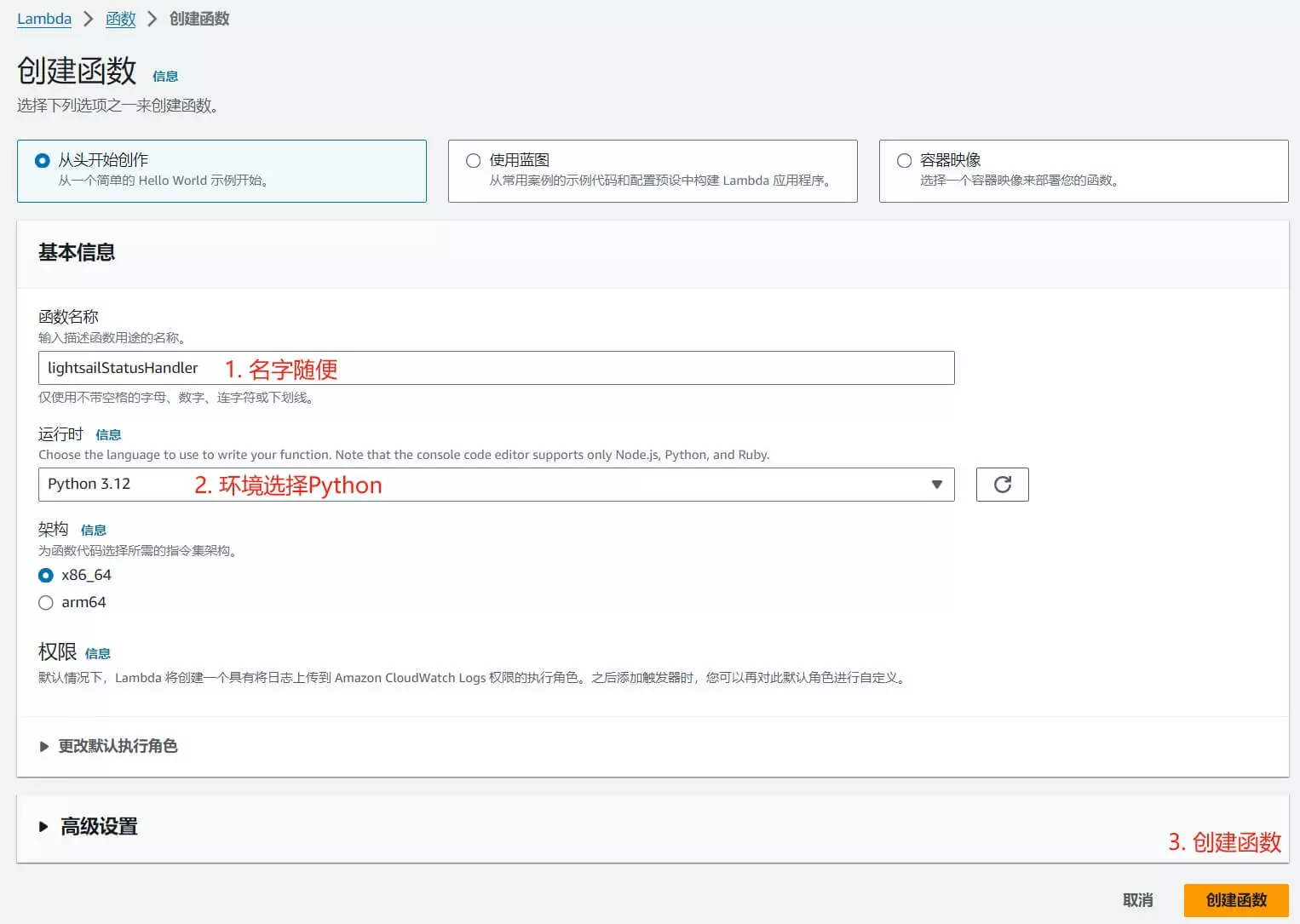
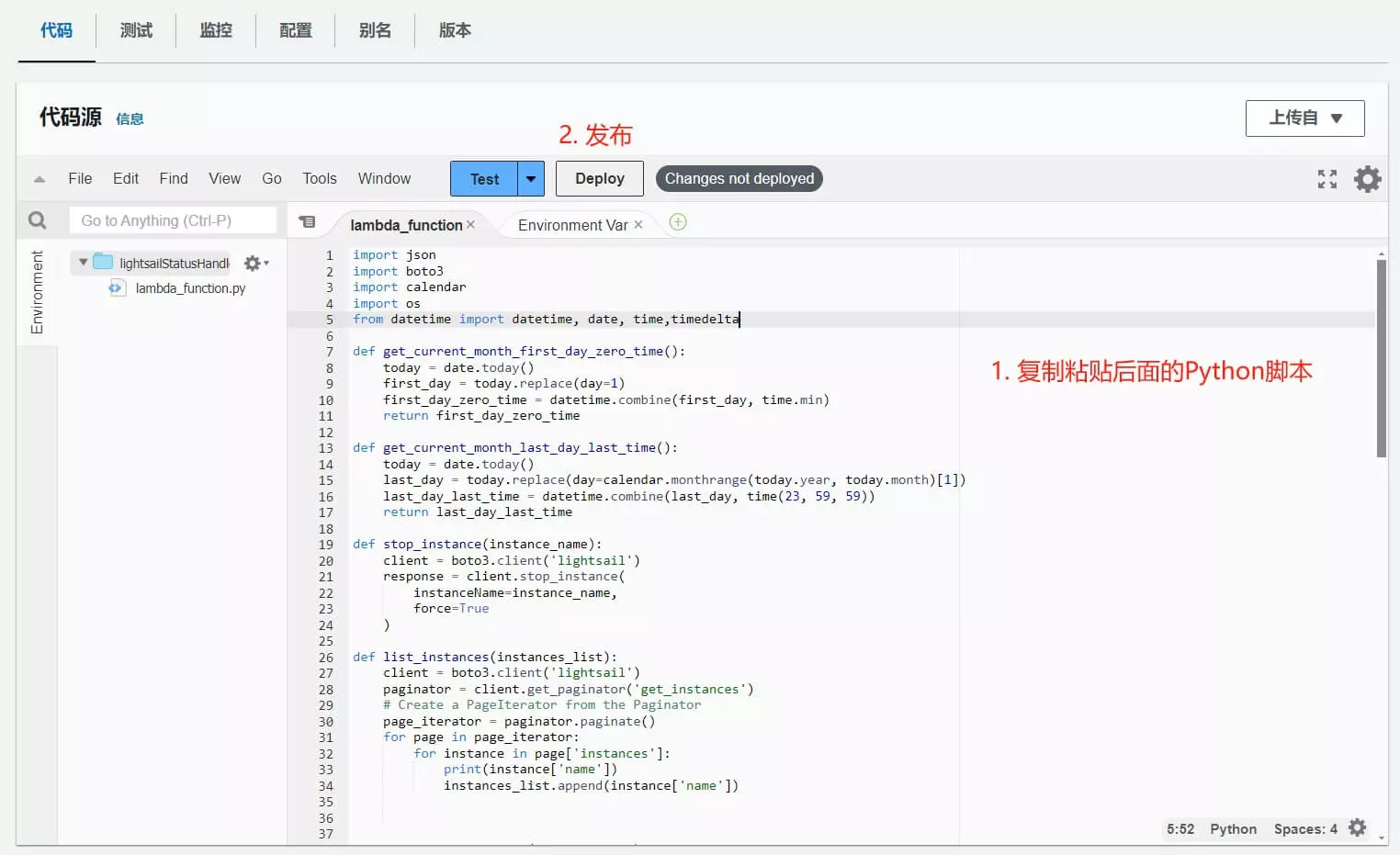
Python脚本:
1
2
3
4
5
6
7
8
9
10
11
12
13
14
15
16
17
18
19
20
21
22
23
24
25
26
27
28
29
30
31
32
33
34
35
36
37
38
39
40
41
42
43
44
45
46
47
48
49
50
51
52
53
54
55
56
57
58
59
60
61
62
63
64
65
66
67
68
69
70
71
72
73
74
75
76
77
78
79
80
81
82
83
84
85
86
87
88
89
90
91
92
93
94
95
96
97
98
99
100
101
102
103
104
105
106
107
108
| import json
import boto3
import calendar
import os
from datetime import datetime, date, time,timedelta
def get_current_month_first_day_zero_time():
today = date.today()
first_day = today.replace(day=1)
first_day_zero_time = datetime.combine(first_day, time.min)
return first_day_zero_time
def get_current_month_last_day_last_time():
today = date.today()
last_day = today.replace(day=calendar.monthrange(today.year, today.month)[1])
last_day_last_time = datetime.combine(last_day, time(23, 59, 59))
return last_day_last_time
def stop_instance(instance_name):
client = boto3.client('lightsail')
response = client.stop_instance(
instanceName=instance_name,
force=True
)
def list_instances(instances_list):
client = boto3.client('lightsail')
paginator = client.get_paginator('get_instances')
# Create a PageIterator from the Paginator
page_iterator = paginator.paginate()
for page in page_iterator:
for instance in page['instances']:
print(instance['name'])
instances_list.append(instance['name'])
def get_month_dto_quota(instance_name):
client = boto3.client('lightsail')
response = client.get_instance(
instanceName=instance_name
)
#print("response : {}".format(response))
dto_quota = response['instance']['networking']['monthlyTransfer']['gbPerMonthAllocated']
current_datetime = datetime.now()
instance_created_datetime = response['instance']['createdAt']
if (instance_created_datetime.year == current_datetime.year) and (instance_created_datetime.month == current_datetime.month):
month_ts = get_current_month_last_day_last_time().timestamp() - get_current_month_first_day_zero_time().timestamp()
instance_valide_ts = get_current_month_last_day_last_time().timestamp() - instance_created_datetime.timestamp()
dto_quota = (instance_valide_ts/month_ts) * dto_quota
print("created in current month, quota: {}GB".format(dto_quota))
else:
dto_quota = response['instance']['networking']['monthlyTransfer']['gbPerMonthAllocated']
print("created in previous month, full quota: {}GB".format(dto_quota))
return dto_quota
def get_instance_data_usage(instance_name, data_type):
client = boto3.client('lightsail')
current_time = datetime.utcnow()
start_time = get_current_month_first_day_zero_time()
end_time = get_current_month_last_day_last_time()
start_time_str = start_time.strftime('%Y-%m-%dT%H:%M:%SZ')
end_time_str = end_time.strftime('%Y-%m-%dT%H:%M:%SZ')
response = client.get_instance_metric_data(
instanceName=instance_name,
metricName=data_type,
period= 6 * 600 * 24,
unit='Bytes',
statistics=[
'Sum'
],
startTime=start_time_str,
endTime=end_time_str
)
data_points = response['metricData']
total_data_usage = sum([data_point['sum'] for data_point in data_points])
print("total {} usage: {}".format(data_type, total_data_usage))
return total_data_usage
def push_notification(arn, msg):
sns_client = boto3.client('sns')
print("sqs arn: {}".format(arn))
response = sns_client.publish(
TopicArn=arn,
Message=msg,
Subject='Lightsail NetworkOut exceeded quota '
)
def lambda_handler(event, context):
instance_name= []
list_instances(instance_name)
for i in instance_name:
quota = get_month_dto_quota(i) * 1000 * 1000 * 1000
total = get_instance_data_usage(i, "NetworkOut") + get_instance_data_usage(i, "NetworkIn")
msg = f"instance_name: {i} \nusage: {total} Byte \nquota: {quota} Byte \nusage percent: {(total/quota)*100} %"
print(msg)
if (int(quota) * 0.95) < int(total):
print("(quota * 0.95) < total, soforce close instance: {}".format(1))
stop_instance(i)
return {
'statusCode': 200,
'body': json.dumps('total_data_usage from Lambda!')
}
|
2. 修改函数运行配置#
在之前创建的Lambda函数页面,进入配置——常规配置——编辑:

调大内存和超时时间:
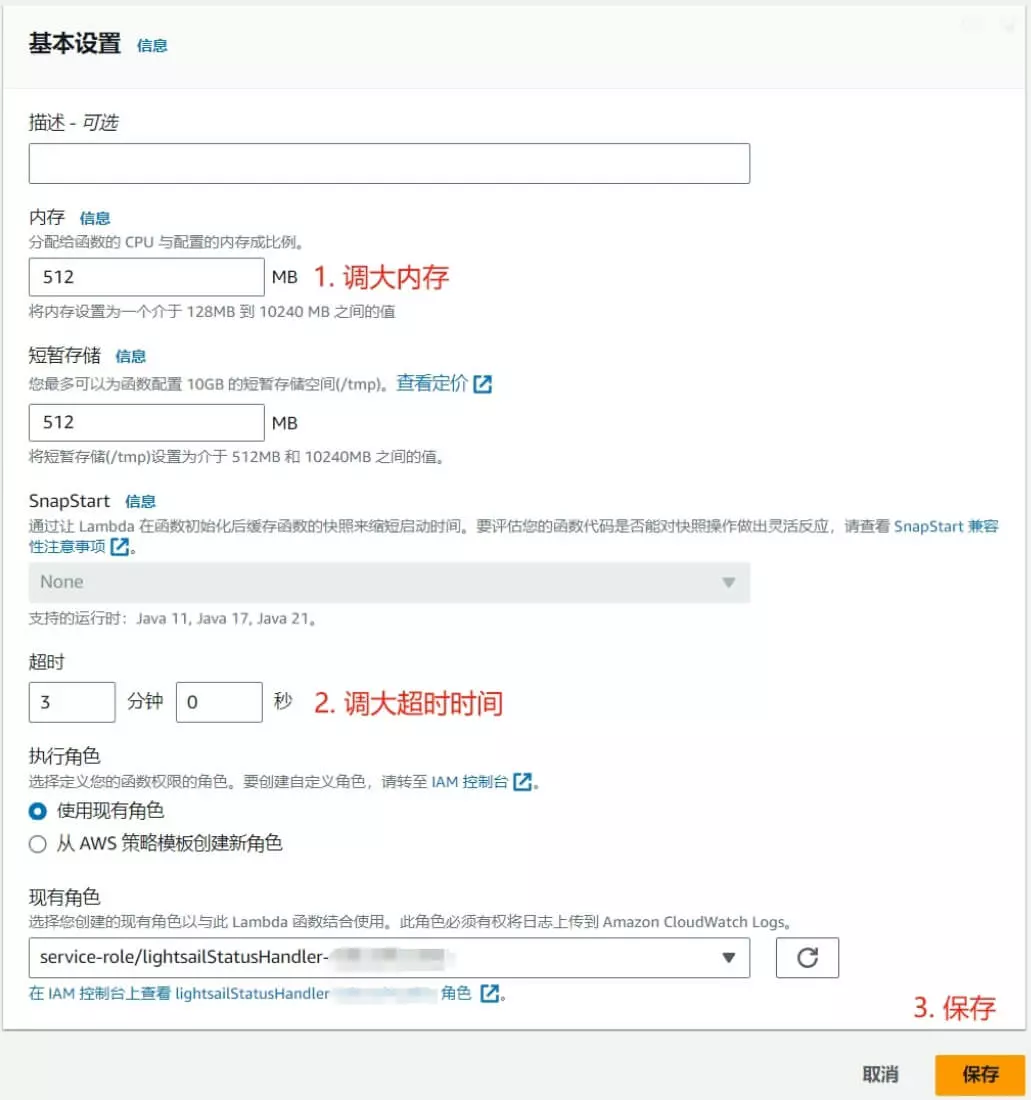
3. 赋予Lambda权限#
在之前创建的Lambda函数页面,进入配置——权限——点击链接跳转至IAM权限管理页面:

创建新的策略:
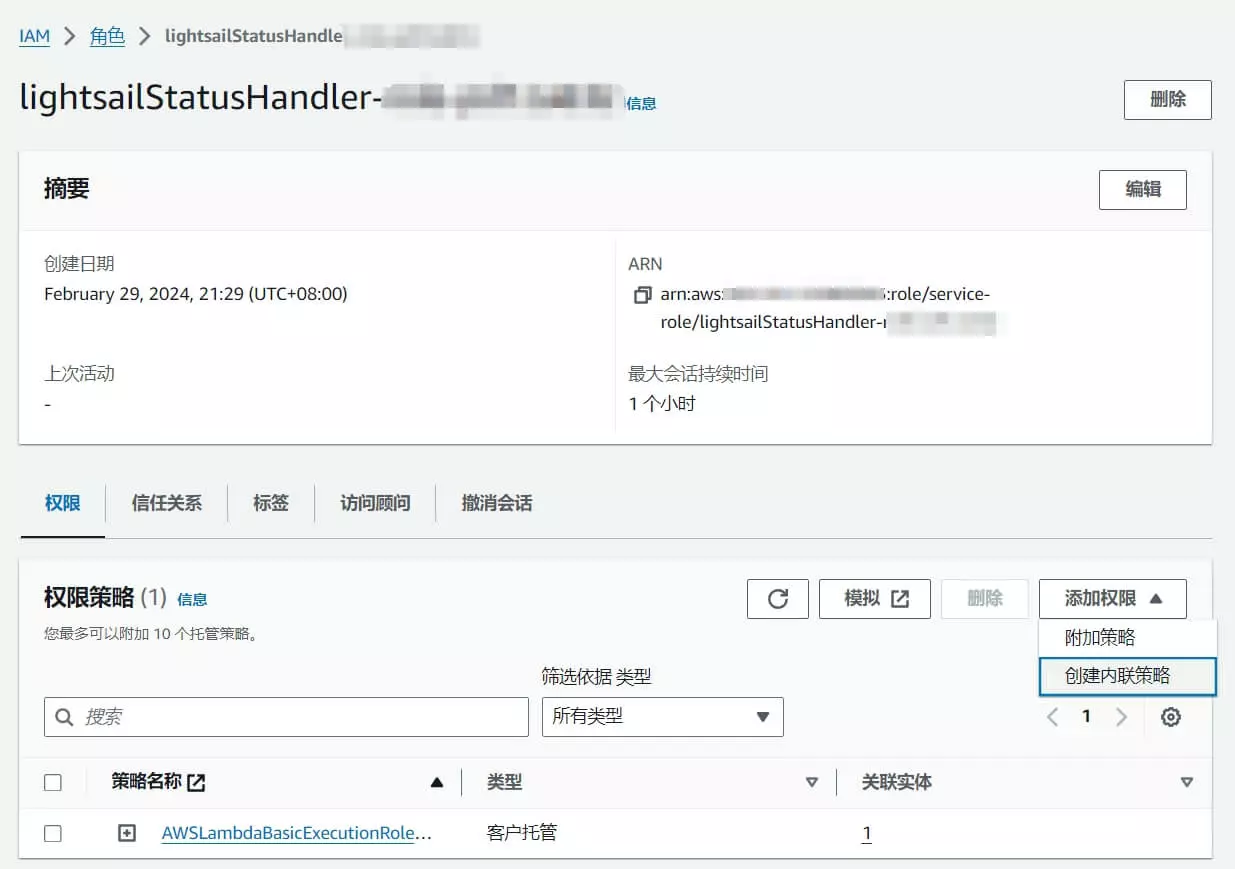
选择JSON,粘贴数据,保存
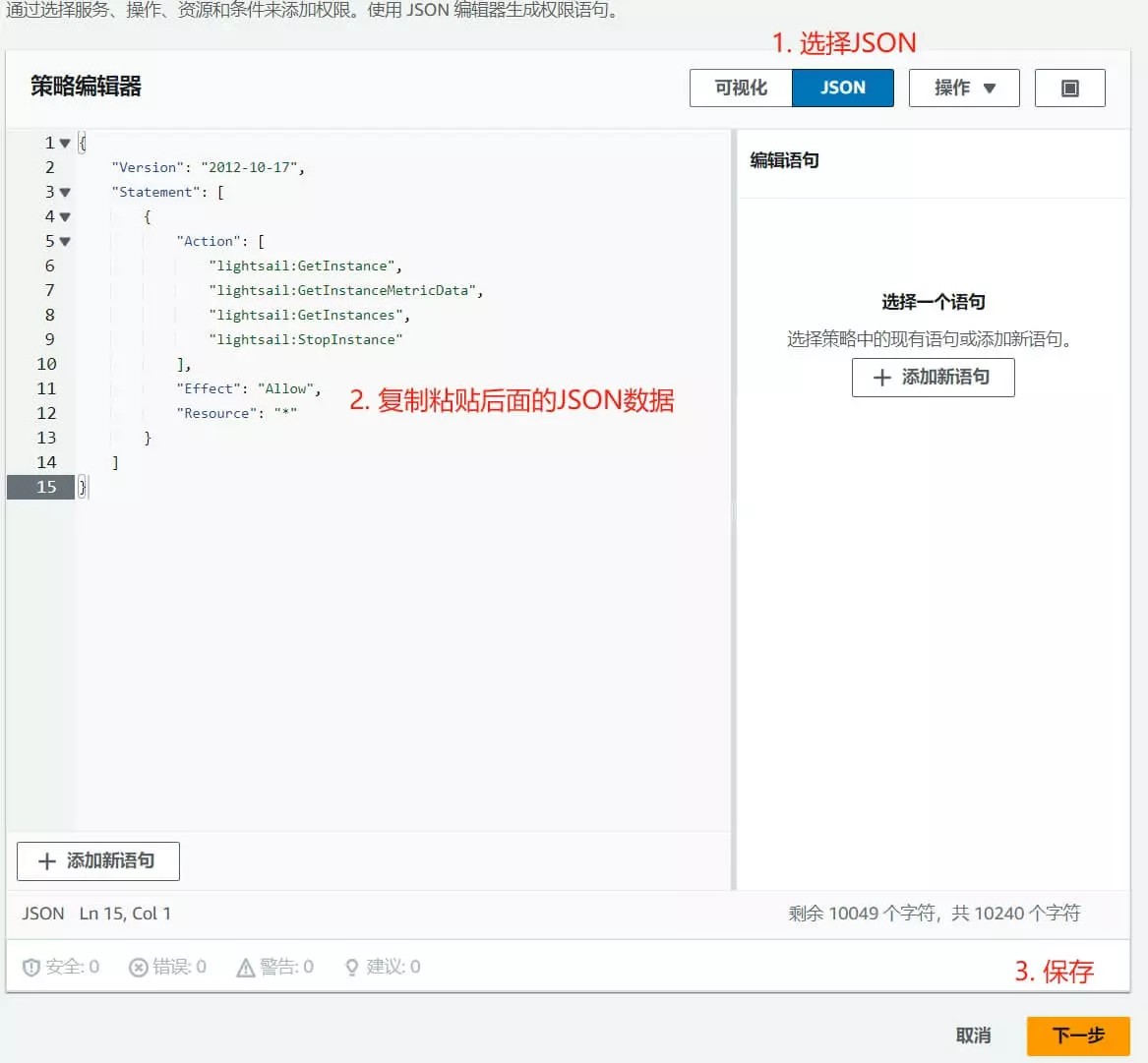
JSON数据:
1
2
3
4
5
6
7
8
9
10
11
12
13
14
15
| {
"Version": "2012-10-17",
"Statement": [
{
"Action": [
"lightsail:GetInstance",
"lightsail:GetInstanceMetricData",
"lightsail:GetInstances",
"lightsail:StopInstance"
],
"Effect": "Allow",
"Resource": "*"
}
]
}
|
策略创建完成后关闭IAM权限页面,回到Lambda函数页面,测试是否成功:
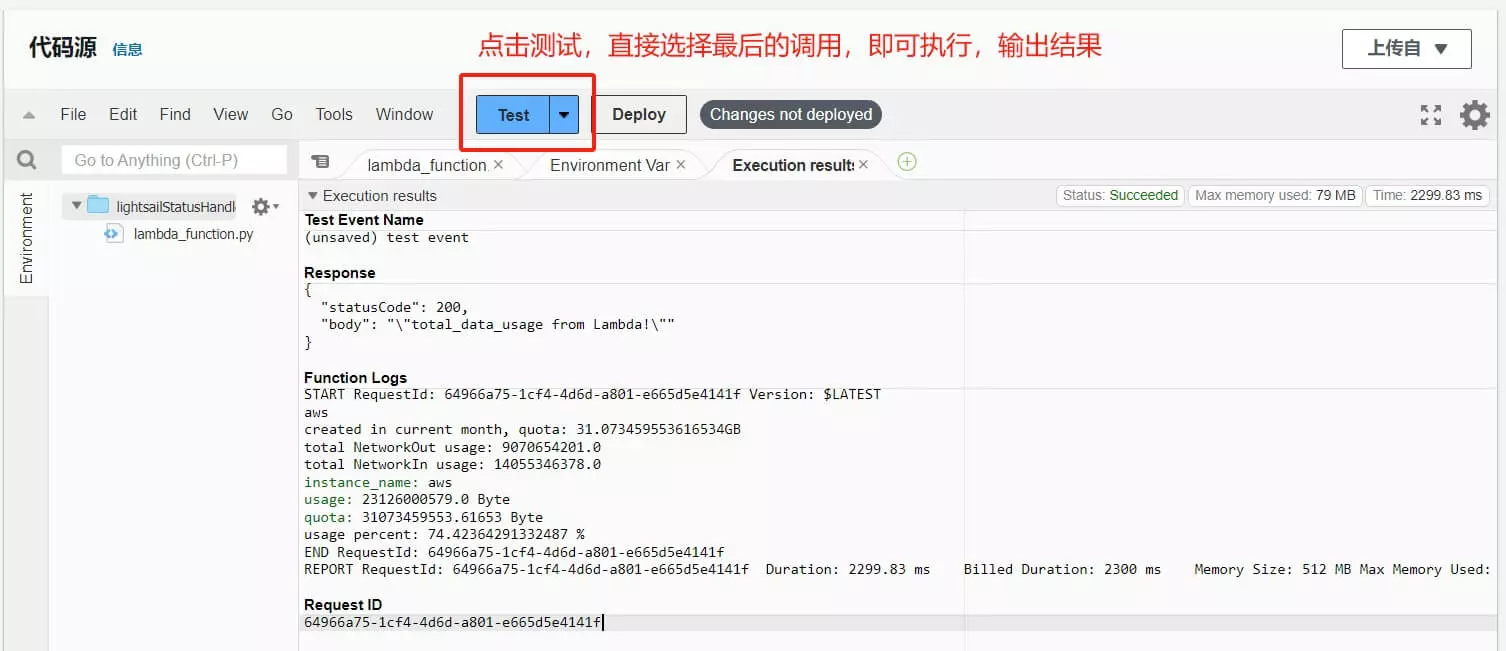
4. 创建定时任务触发Lambda函数#
在Lambda函数页面点击添加触发器:
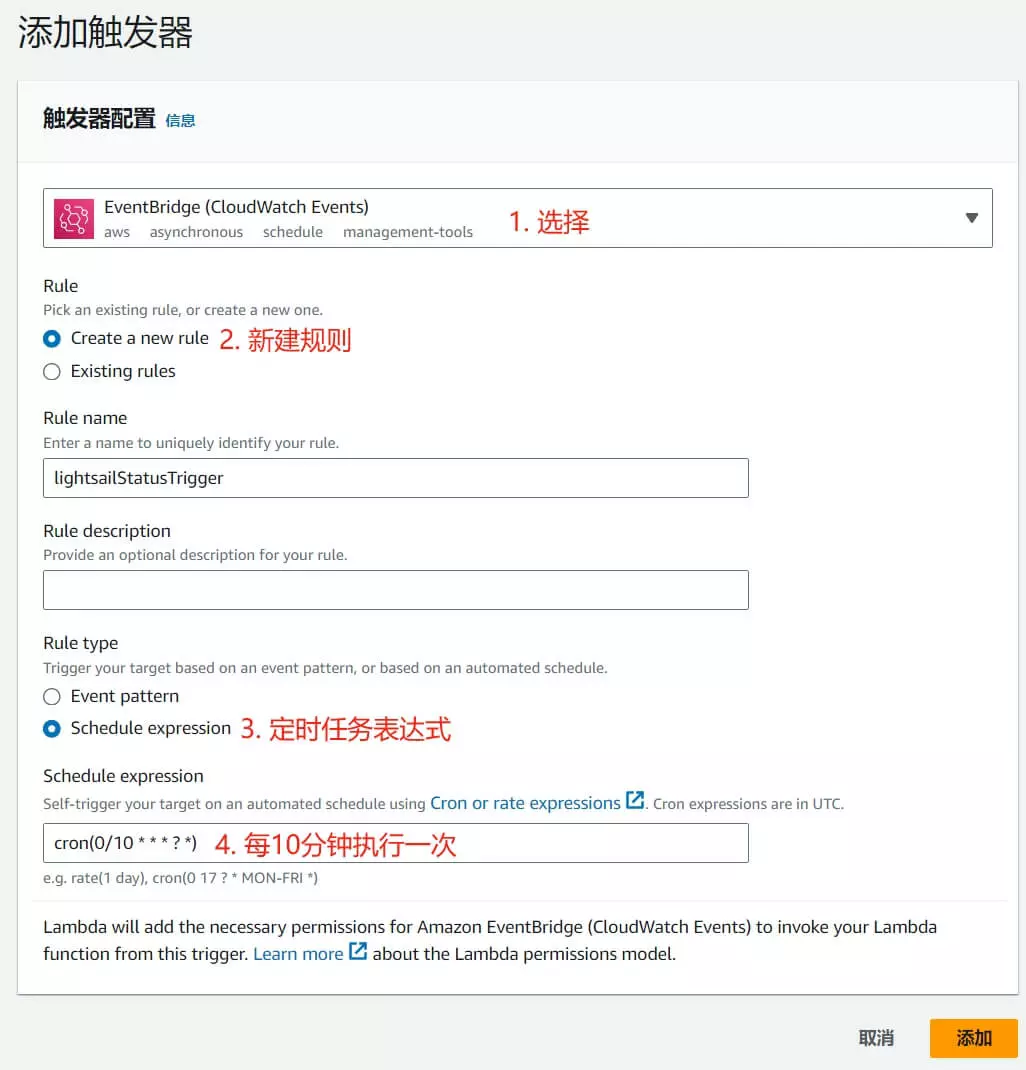
选择EventBridge,增加定时任务,保存:
表达式:cron(0/10 * * * ? *)

这时就已经基本完成配置了。
Lambda函数每10分钟执行一次,符合条件就会自动关闭实例。
5. 查看历史执行记录#
在Lambda函数页面,选择监控,点击查看CloudWatch Logs跳转至日志页面。

选择日志就可以看到日志的详细信息了:
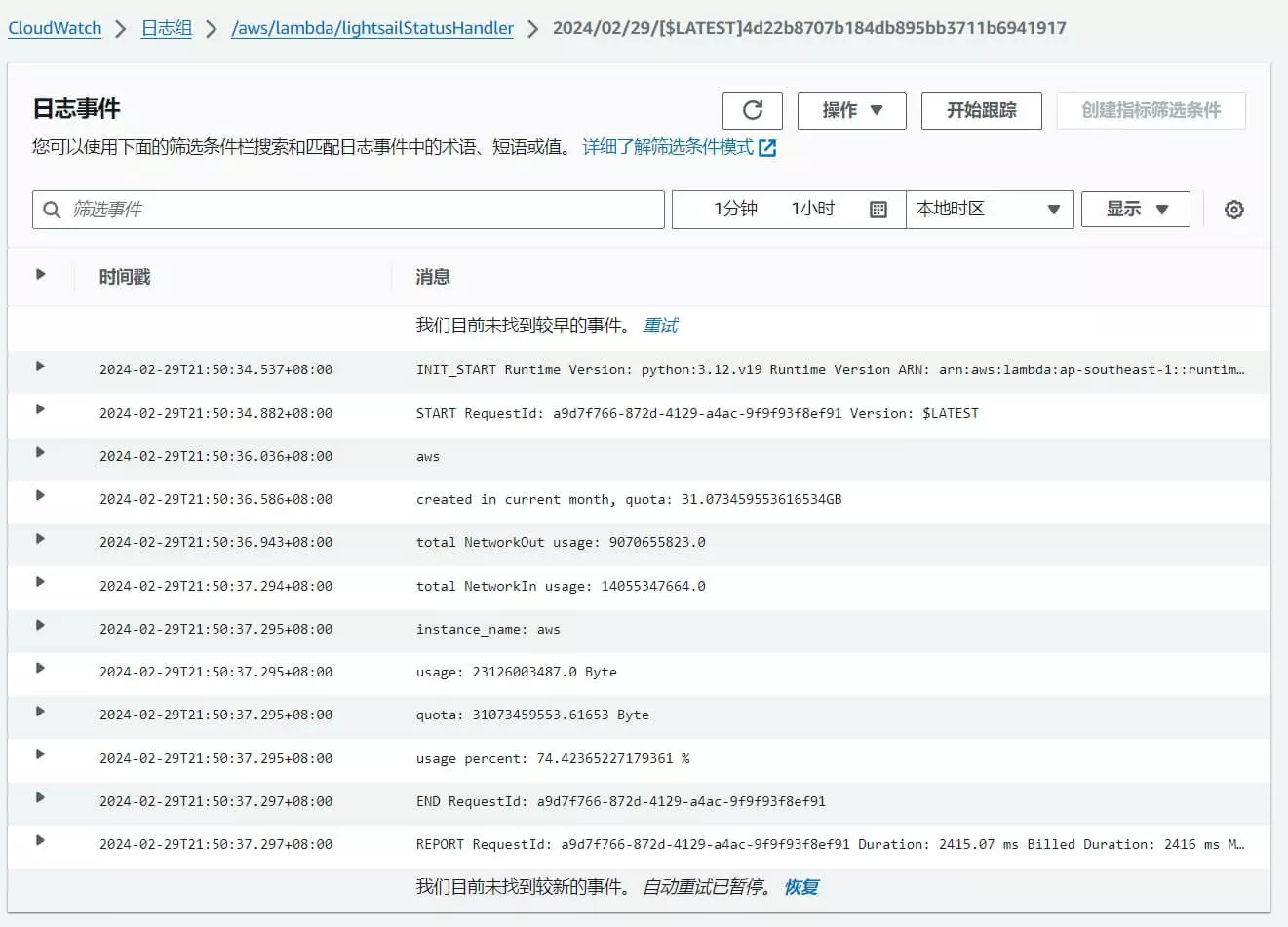
这样就可以查看历史的执行结果了。
四、参考资料#
使用 Lambda 监控 Amazon Lightsail 数据流量
和原文不同的点:
- 删除了通知部分,我搭建完成后,通知不能选邮件,对我就没啥用处了。
- 原本对比逻辑是超过限额才停机,我调整为了超过限额的95%就停机,可以自行修改脚本进行调整。












